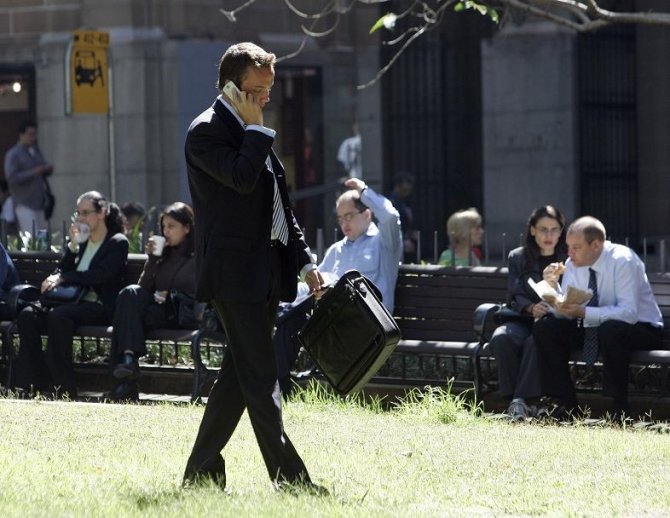
An overview of the average annual hours worked per person in selected countries puts South Korea top with a whopping 2,193 hours, followed by Chile on 2,068.
Workers in UK clock up 1,647 hours and Germans 1,408 – putting them at the bottom of the table, above only the Netherlands.
Greek workers have had a bad press recently but they work longer hours than any other Europeans. Their average of 2,017 hours a year puts them third in the international ranking, based on figures compiled by the Organisation for Economic Co-operation and Development (OECD).
It’s worth mentioning that the OECD has only 34 members – most of them developed countries – and some very important countries, such as India, China and Brazil, are not among them.
The OECD data includes full and part-time salaried workers and the self-employed. It includes all the hours they work, including overtime.
While figures are available for some other parts of the world, they are not directly comparable to the OECD data because they are collated very differently or they are out of date, so we are focusing only on the OECD nations.
But by looking at data from the OECD and the International Labour Organization (ILO) we can see some broad and interesting trends.
“Asian countries tend to work the longest [hours], they also have the highest proportion of workers that are working excessively long hours of more than 48 hours a week,” says Jon Messenger, an ILO expert on working hours.
“Korea sticks out because it’s a developed country that’s working long hours,” he says.
“Normally it’s developing countries like Bangladesh, Malaysia, Thailand, Sri Lanka – countries like this that are working long hours.”

But working longer doesn’t necessarily mean working better.
“Generally speaking, long working hours are associated with lower productivity per hour. Workers are working very long hours to achieve a minimum level of output or to achieve some minimum level of wages because frankly they’re not very productive,” Jon Messenger says.
The picture is very different in the developed world, where working hours have been falling.
“Over the last century, you’ve seen a reduction from very long working hours – nearly 3,000 a year at the beginning of the 1900s – to the turn of the 21st Century when most developing countries were under 1,800 hours,” says Jon Messenger.
“And indeed some of the most productive countries were even lower than that.”
The drop in working hours is in part a reflection of the greater number of part-time workers in the developed world. A large number of part-time workers brings down a country’s average – in the case of Japan, for example, a high proportion of people work excessive hours, but many also work part-time, leaving the country in the middle of the table, with 1,700 hours.
“You have more and more people working part-time hours,” says Jon Messenger.
“They’re quite capable of supporting themselves, quite capable of producing what they need to produce, so it’s just not necessary to work longer than that.”
Tighter labor laws in developed countries, particularly in Europe, have also reduced working hours. The differences between the most developed nations are small but leave entitlement makes a difference.
Jon Messenger says the average Briton works 150 fewer hours than an American.
“The difference is really driven by the fact that the US is the only developed country that has no legal or contractual or collective requirement to provide any minimum amount of annual leave,” he says.
The UK, in contrast, is subject to the European working time directive, which requires at least four weeks of paid annual leave for every employee.
Some European countries have a higher statutory level of paid leave – 25 days in Austria, Denmark, France, Italy, Luxembourg and Sweden in 2010, according to the European Industrial Relations Observatory (EIRO). And some employers provide more paid leave than the statutory minimum.
Paid public holidays, which come on top of that, averaged between nine and 10 in the European Union in 2010.
“The combined total of agreed annual leave and public holidays varied in the EU from 40 days in Germany and Denmark to 27 days in Romania – a difference of around 48% or 2.5 working weeks,” EIRO said in a report published last year.
When comparing hours worked, however, there’s one more thing which must be acknowledged.
Each country collects its own data, and their methods may be not always be perfectly comparable.